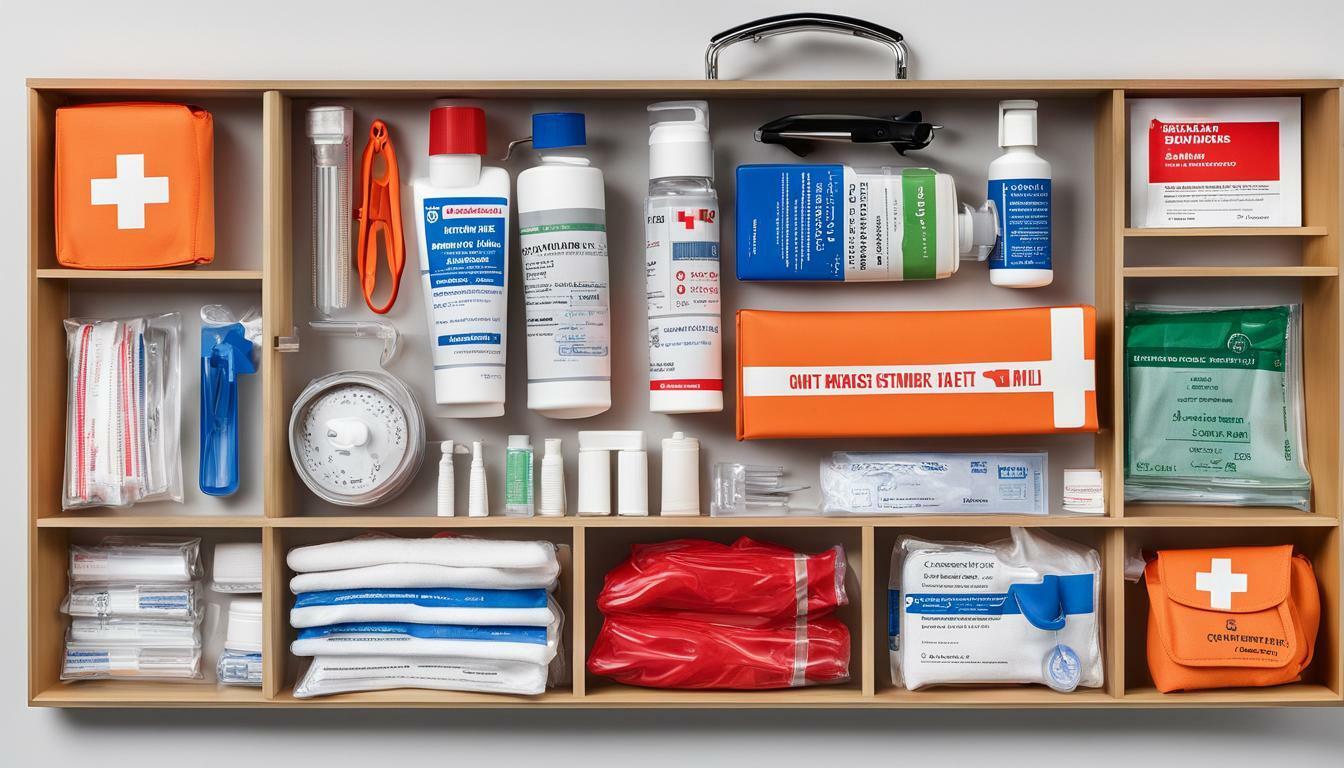As a small business owner, the safety of your employees should be a top priority. Accidents and injuries can occur in any workplace, making it crucial to have a well-stocked first aid kit on hand. Not only does this tool provide immediate assistance in case of an emergency, but it can also create a positive work environment focused on employee well-being.
Creating a first aid kit might seem like a daunting task, but it can save lives and protect your business from potential legal consequences. By understanding the specific first aid needs of your workplace and investing in training, maintenance, and a strong safety culture, you can ensure your employees feel valued and secure in their work environment.
Key Takeaways
- Small businesses should prioritize employee safety by creating a well-stocked first aid kit.
- Assessing first aid needs and selecting essential supplies and equipment are crucial steps in creating an effective kit.
- Proper storage, accessibility, and maintenance of the kit are essential for effective emergency response.
- Investing in first aid training and promoting a strong safety culture can enhance workplace safety and productivity.
The Importance of Workplace Safety
Workplace safety is a crucial aspect of any business, big or small. Ensuring the safety and well-being of employees should be a top priority for employers, not only to avoid accidents and injuries but also to comply with occupational health and safety regulations.
Small businesses are particularly vulnerable when it comes to workplace safety, as they often lack the resources and expertise of larger companies. However, this does not negate the importance of prioritizing employee safety. In fact, small businesses may be more susceptible to legal repercussions in the case of workplace accidents, making it even more essential to ensure a safe work environment.
Creating a culture of workplace safety can have numerous benefits for small businesses beyond risk management. By focusing on employee safety and well-being, businesses can enhance employee morale, increase productivity, and improve overall business performance.
Therefore, small businesses should not overlook the significance of workplace safety. By taking proactive measures to identify and mitigate potential hazards, businesses can create a safe and positive work environment for their employees.
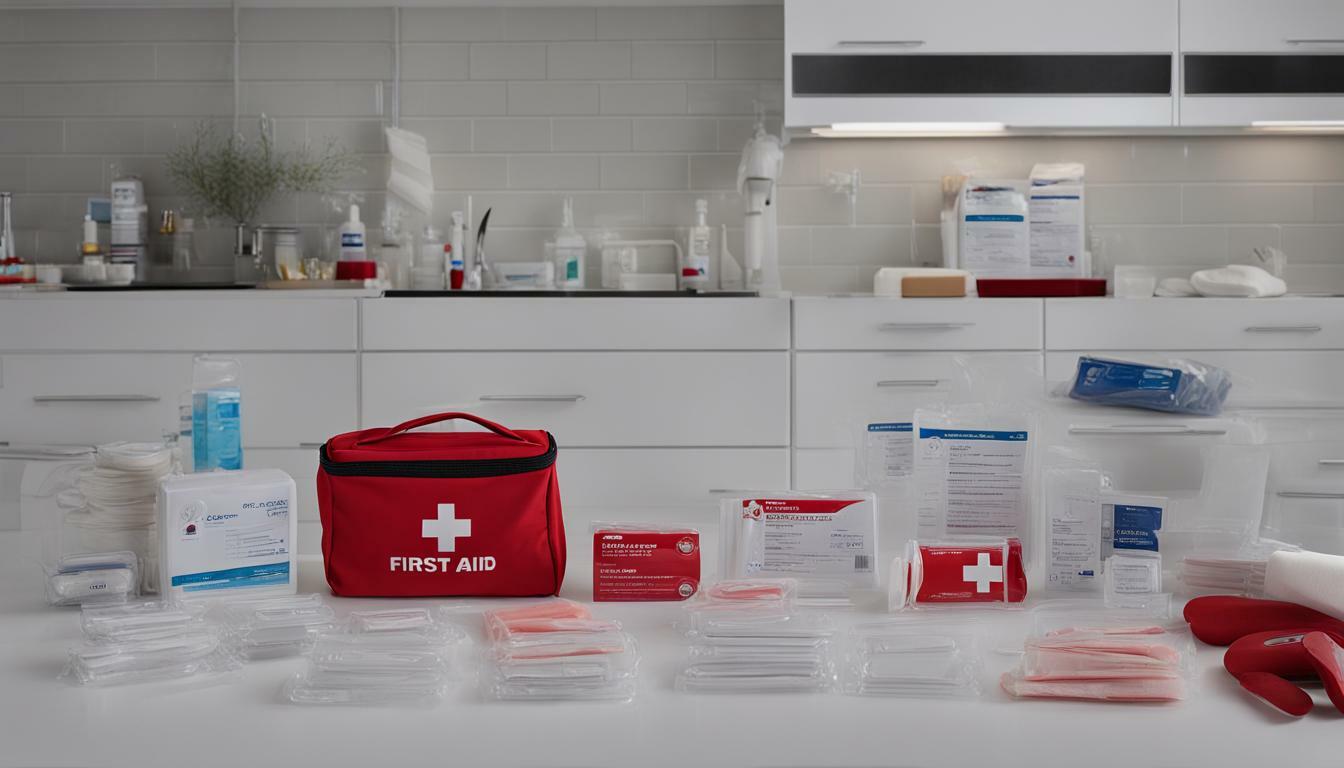
The Importance of Occupational Health and Safety
The importance of occupational health and safety cannot be overstated. Workplace accidents and injuries can result in serious consequences for both employees and employers, including physical harm, financial costs, and legal repercussions.
Occupational health and safety regulations exist to protect employees and ensure a safe work environment. Failure to comply with these regulations can result in fines, legal action, and reputational damage for businesses.
Additionally, prioritizing employee safety can have a positive impact on employee morale and productivity. When employees feel safe and valued, they are more likely to be engaged and committed to their work, leading to increased job satisfaction and performance.
Assessing First Aid Needs
Before assembling a first aid kit, small businesses should assess their specific first aid needs. This involves considering the nature of their work, potential hazards, and the number of employees. By understanding the potential risks and requirements, businesses can ensure that their first aid kit is well-equipped to handle workplace emergencies.
To begin with, it is important to identify the types of first aid supplies that may be required. For instance, if your workplace involves working with heavy machinery, a well-stocked kit must have adequate supplies to treat cuts, burns, strains, sprains, and fractures. Similarly, if your employees work in an outdoor environment, you may need to consider stocking supplies to treat insect bites, stings, and exposure to extreme temperatures.
When assessing your first aid needs, it is also important to consider the potential workplace emergencies. Your first aid kit should be able to cater to medical emergencies such as heart attacks, seizures, and allergic reactions. You should also consider the possible environmental emergencies such as fire, chemical spills, or natural disasters that may require emergency response supplies such as fire extinguishers and safety equipment.
Small businesses should not overlook the importance of having the right first aid equipment. This may include items such as gloves, scissors, and tweezers, among others. You should also consider the size of your workplace when assembling your first aid kit. Larger workplaces may require multiple first aid kits or additional equipment such as stretchers.
By taking the time to assess your first aid needs, you can ensure that your small business first aid kit is well-equipped to handle any medical emergency or accident that may arise in the workplace. Refer to the next section to obtain a comprehensive guide on essential first aid kit supplies.

Essential First Aid Kit Supplies
Assembling a first aid kit for small businesses is a crucial step in enhancing workplace safety and employee well-being. A well-stocked first aid kit can help mitigate the risks of workplace emergencies and ensure that minor injuries are treated promptly and effectively. In this section, we will outline the essential first aid supplies that every small business first aid kit should include to address common workplace emergencies.
| First Aid Supplies | Importance |
|---|---|
| Bandages (assorted sizes) | Essential for treating cuts, scrapes, and minor wounds. |
| Antiseptics (such as alcohol wipes or hydrogen peroxide) | Used to clean and disinfect wounds to prevent infections. |
| Pain relievers (such as aspirin or ibuprofen) | Effective in reducing pain and inflammation caused by minor injuries. |
| Gloves | Used to protect both the responder and the injured person from potential exposure to blood or other bodily fluids. |
| Scissors and tweezers | Handy tools for cutting bandages and removing foreign objects from wounds. |
| Instant cold pack | Effective in reducing swelling and relieving pain caused by sprains or strains. |
Other first aid supplies that can be added to a small business first aid kit include sterile gauze, eye wash, CPR masks, and emergency blankets. It is important to replenish the first aid supplies as they are used, and to ensure that the kit is kept in good working condition to address any workplace emergencies.
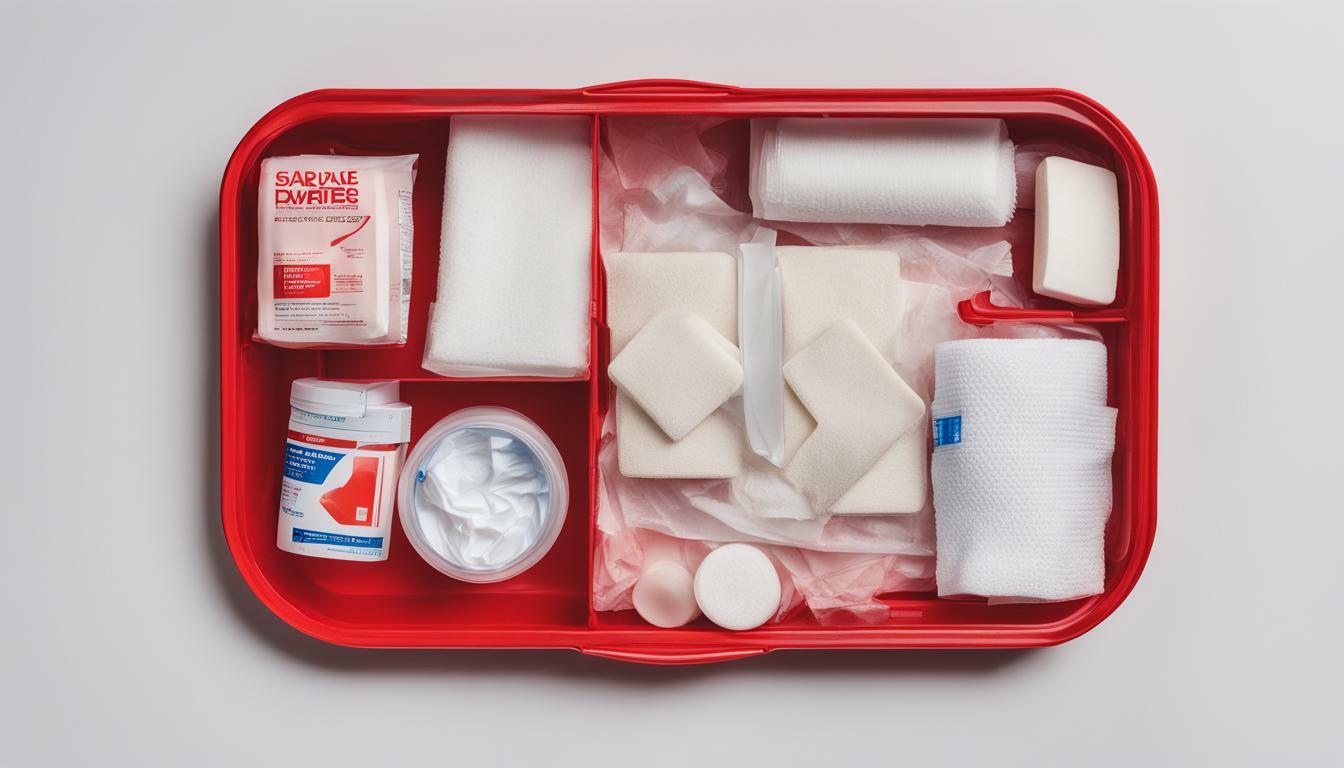
It is also vital to choose high-quality first aid equipment that is both reliable and durable. Businesses should avoid purchasing cheap or low-quality first aid supplies that could jeopardize their employees’ well-being. Investing in high-quality first aid equipment demonstrates a commitment to workplace safety and prioritizes employee health.
First Aid Kit Storage and Accessibility
Proper storage and accessibility of a first aid kit are crucial for effective emergency response in the workplace. Small businesses must ensure that the first aid kit is easily accessible to all employees, prominently labeled, and kept in a secure location. This reduces response time and ensures that necessary supplies are available when needed.
| Storage Location | Accessibility | Labelling |
|---|---|---|
| Designate a specific location for the first aid kit, away from potential hazards | Make sure the kit is easily accessible to all employees, and everyone knows where it is located | Label the kit with clear instructions and include a list of contents |
By storing the first aid kit in a specific location and making sure it is easily accessible, small businesses can promote workplace safety and ensure that employees have immediate access to necessary supplies in the event of an emergency. Additionally, it is important to check the expiration dates of the supplies regularly and replace any that have expired.
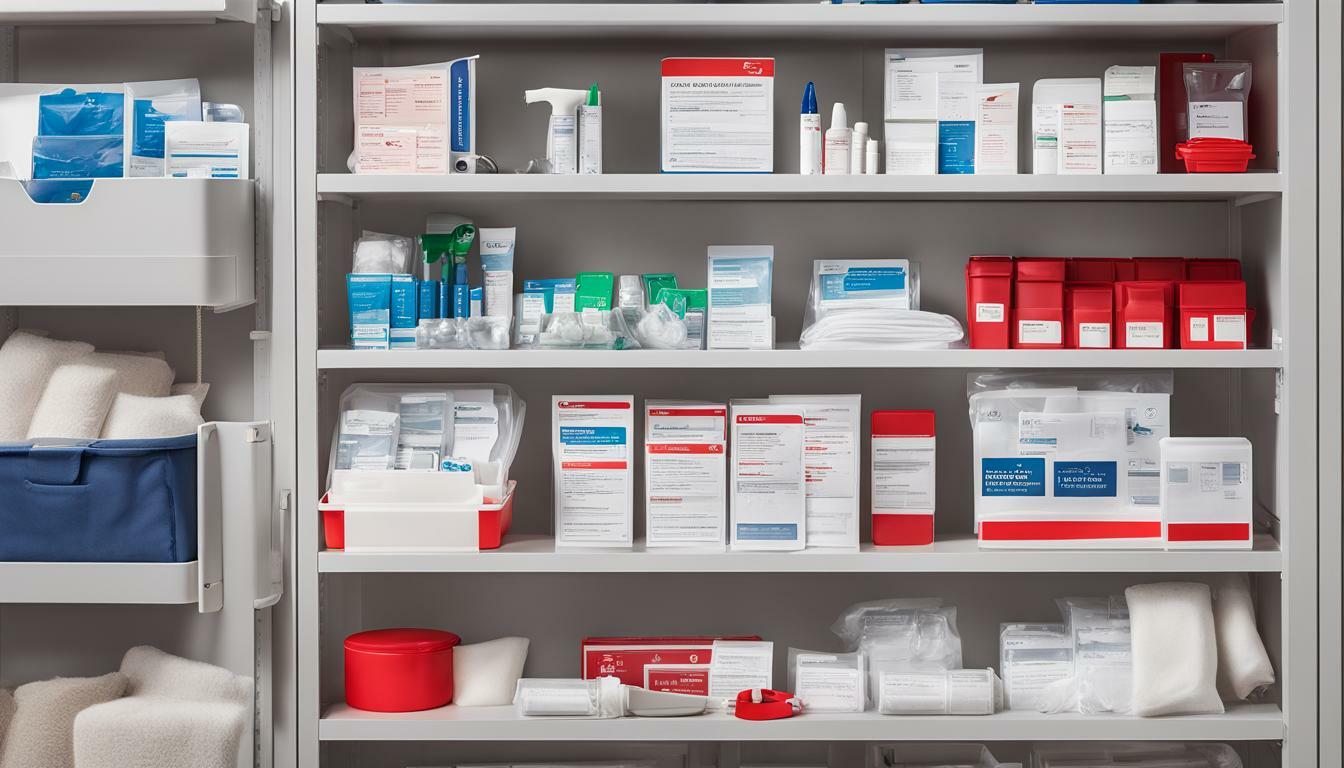
Small businesses can also consider providing additional first aid supplies in areas where potential hazards exist, such as hazardous material storage or manufacturing areas. This ensures that employees have immediate access to necessary supplies in case of an emergency.
Creating a Clear Plan
Creating a clear plan for using the first aid kit and responding to emergencies is equally important. Small businesses should develop a workplace safety policy that includes guidelines for the use of the first aid kit. Employees should be trained on how to properly use the first aid kit and respond to different types of emergencies. By having a clear and well-communicated plan in place, small businesses can ensure that workplace safety is a top priority.
Overall, proper storage, accessibility, and clear communication regarding the first aid kit are essential for effective emergency response. By prioritizing workplace safety and investing in a well-stocked and accessible first aid kit, small businesses can promote a culture of safety and ensure the well-being of their employees.
First Aid Training for Employees
Having a well-stocked first aid kit is not enough; employees should also possess the necessary first aid skills to respond to emergencies effectively. Small businesses should invest in first aid training programs to ensure their employees are equipped with the knowledge and confidence to administer basic first aid.
Offering first aid training is a proactive way of prioritising employee safety and workplace safety. It can help reduce the risk of injuries, accidents, and illnesses in the workplace. Moreover, first aid training can also boost employee morale and engagement, making them feel valued by the company.
The first step in providing first aid training is to assess the specific needs of the business. Depending on the nature of the work and the potential risks involved, different types of training may be required. For example, a construction company may require training in handling injuries caused by heavy machinery, while an office-based business may need training in administering CPR or dealing with common injuries such as burns and cuts.
Identifying the right training programme is crucial for ensuring that employees receive the necessary skills and knowledge to respond to workplace emergencies. Businesses can opt for certified training providers that offer courses customised to the specific needs of the company. They can also consider having an in-house trainer who can provide regular training sessions to employees.
By investing in first aid training, small businesses can demonstrate their commitment to employee safety and workplace safety. It is also an effective way to keep employees engaged and motivated, making them feel valued and cared for.
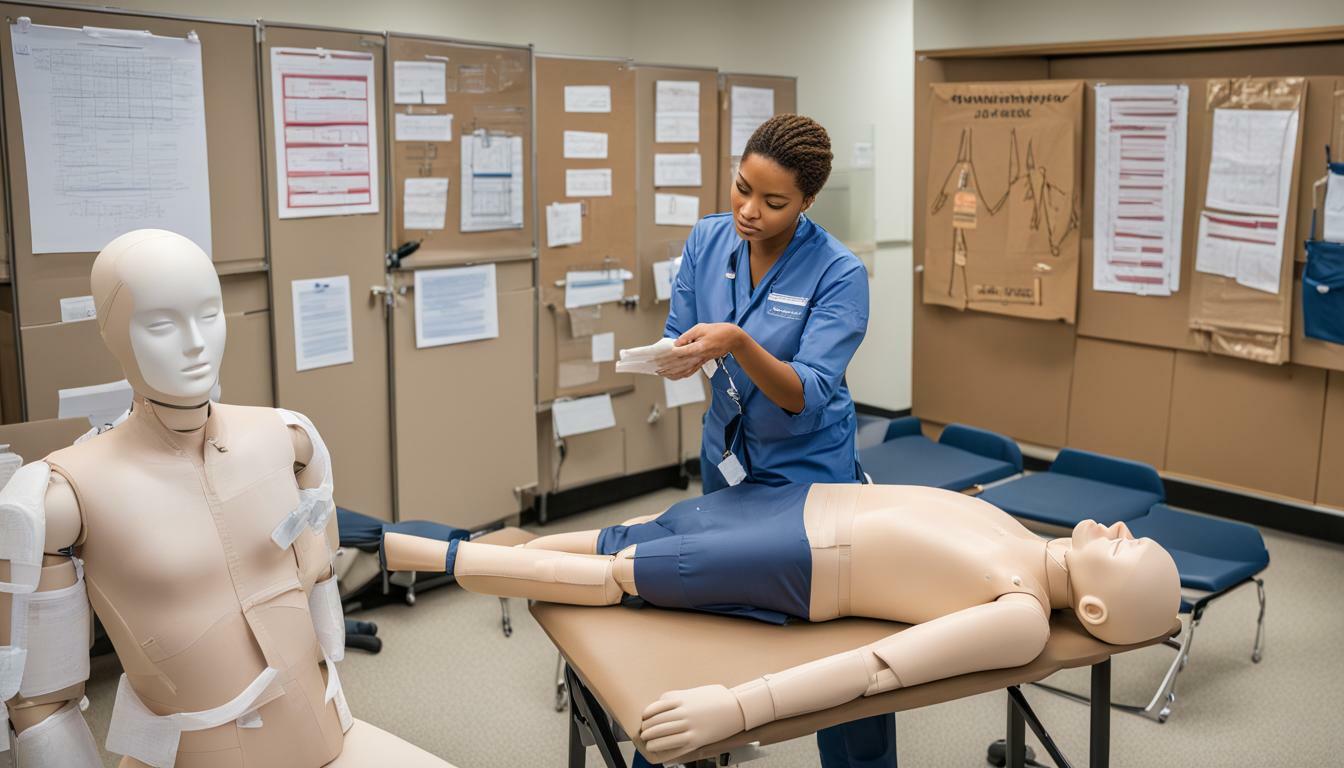
Providing first aid training is not just about complying with regulatory requirements; it’s also about creating a culture of safety and well-being in the workplace. Businesses that prioritise employee safety and well-being can reap benefits such as improved productivity, reduced absenteeism, and a positive work environment.
Regular First Aid Kit Maintenance
Regular maintenance of the first aid kit is crucial for ensuring workplace safety and employee well-being. Small businesses should establish a schedule for checking and restocking the kit to ensure it is always ready for any emergencies.
Here is a checklist of essential tasks for regularly maintaining the first aid kit:
| Task | Frequency |
|---|---|
| Check expiration dates on all supplies | Monthly |
| Replace any expired or used supplies | As needed |
| Inspect equipment for damages or malfunctions | Monthly |
| Clean and disinfect the first aid kit and its contents | Quarterly |
To ensure optimal accessibility, small businesses should keep the first aid kit in a prominently labelled, secure location that is easily accessible to all employees. Additionally, it is important to assign responsibility for maintaining the first aid kit to a designated employee.
Regular first aid kit maintenance is a critical component of workplace safety. By ensuring that the first aid kit is properly stocked and accessible, small businesses can take proactive steps to protect the health and well-being of their employees and mitigate potential risks.
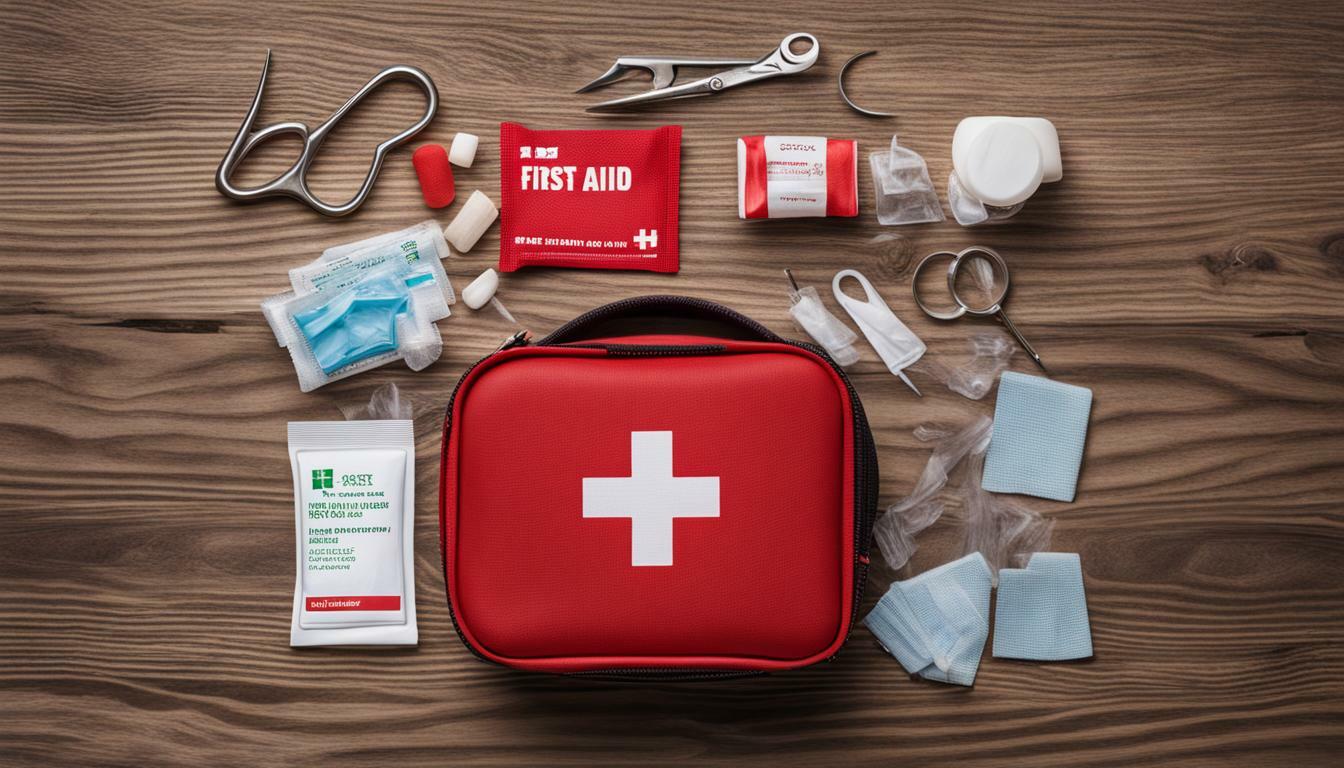
Creating a Safety Culture
Small businesses should prioritize workplace safety to enhance employee safety and well-being. Creating a strong safety culture is essential, and it starts with regular safety meetings to discuss potential hazards and identify ways to minimize risks. Encourage open communication channels so that employees can report safety concerns or suggest improvements without fear of retribution. When employees feel involved and valued, it creates a positive work environment, and business owners can address safety concerns before they turn into accidents.
Employee involvement is key in creating a safety culture. Encourage them to participate in safety training and provide feedback on the safety policies. The more involved they are, the more likely they are to buy into the safety culture and champion it. By prioritizing employee safety, small businesses can create a positive work environment that attracts and retains top talent.
Regular Safety Audits
Regular safety audits are an integral part of creating a safety culture. Review and update the safety policies, procedures, and equipment regularly to ensure they meet industry standards. Keep track of near-misses or accidents and identify trends to take proactive measures. Regular safety audits demonstrate a commitment to employee safety and create a culture of continuous improvement.
Training and Education
Employee training is essential in creating a safety culture. Ensure that all employees receive basic first aid and emergency response training. Depending on the nature of the business, additional training may be necessary. Encourage employees to ask questions and reinforce safe work practices through regular training and education. Investing in training and education helps reduce accidents, increase efficiency, and create a safety-conscious work environment.
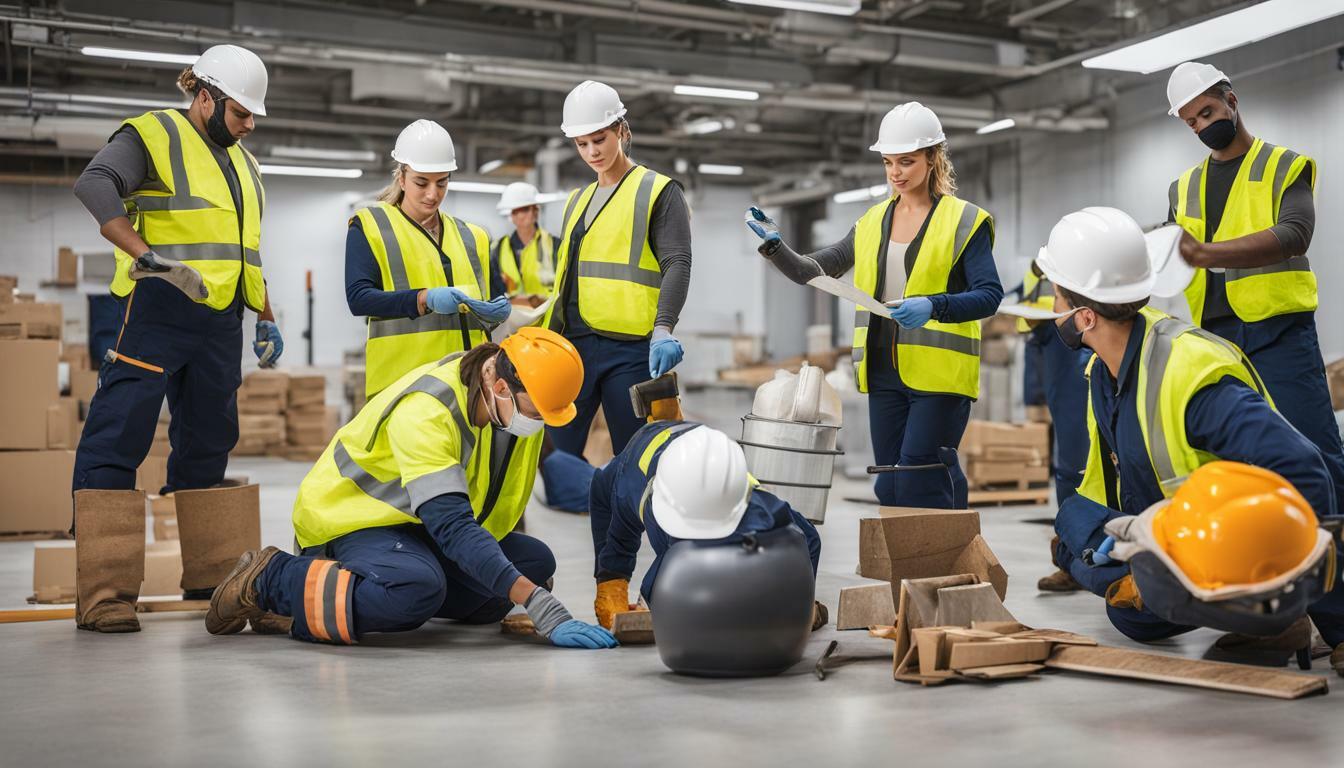
Creating a safety culture is an ongoing process that requires continuous effort. Business owners must lead by example, prioritize employee safety, and continually communicate the importance of workplace safety. By creating a safety culture, small businesses can ensure that employee safety remains a top priority and reduce the risks of accidents and injuries in the workplace.
Creating a First Aid Kit for Small Businesses: Employee Safety
Small businesses should prioritize employee safety by creating a well-stocked first aid kit. This can enhance workplace safety and protect employees from potential risks. It is crucial for small business owners to consider the nature of their work and assess their specific first aid needs. By doing so, they can ensure that their first aid kit is well-equipped to handle any workplace emergencies.
The Importance of Workplace Safety
Before creating a first aid kit, small businesses should understand the significance of workplace safety. Employee safety should be a top priority to avoid accidents, injuries, and potential legal repercussions. By ensuring a safe work environment, businesses can protect their employees and create a positive work culture focused on employee well-being.
Assessing First Aid Needs
Small businesses should assess their specific first aid needs before assembling a first aid kit. This involves considering potential hazards, the number of employees, and the nature of their work. By understanding the potential risks and requirements, businesses can ensure that their first aid kit is well-equipped to handle workplace emergencies. We provide a guide on how to assess first aid needs and identify essential first aid supplies and equipment.
Essential First Aid Kit Supplies
The first aid kit should include essential first aid supplies for treating minor injuries, such as bandages, antiseptics, pain relievers, and gloves. We outline the importance of each item and provide recommendations for selecting high-quality first aid equipment.
First Aid Kit Storage and Accessibility
Proper storage and accessibility of the first aid kit are crucial for effective emergency response. Small businesses must ensure that the first aid kit is easily accessible to all employees, prominently labeled, and kept in a secure location. We provide practical tips on how to store and maintain the first aid kit, ensuring it is readily available in case of emergencies.
First Aid Training for Employees
Providing first aid training programs is essential for employees to possess the necessary first aid skills to respond to emergencies effectively. Small businesses should invest in first aid training to ensure their employees are equipped with the knowledge and confidence to administer basic first aid. We discuss the benefits of providing first aid training and offer recommendations for finding reputable training providers.
Regular First Aid Kit Maintenance
Regular maintenance of the first aid kit is essential to ensure its effectiveness. It is crucial for small businesses to establish a schedule for checking and restocking the kit, replacing expired supplies and ensuring that equipment is in good working condition. We provide a maintenance checklist and offer guidance on how to keep the first aid kit up to date and ready for any workplace emergencies.
Creating a Safety Culture
Creating a safety-conscious work environment is vital for small businesses to prioritize employee well-being. We discuss strategies for fostering a safety culture, including regular safety meetings, open communication channels, and employee involvement. By promoting a safety culture, businesses can reduce workplace accidents and create a positive and productive work atmosphere.
Conclusion
In conclusion, small businesses should create a first aid kit tailored to their specific needs to enhance employee safety and workplace well-being. By prioritizing the health and well-being of employees, businesses can create a positive work environment and mitigate potential risks. We hope this guide has provided valuable insights and practical tips for creating an effective first aid kit for small businesses in the UK.
